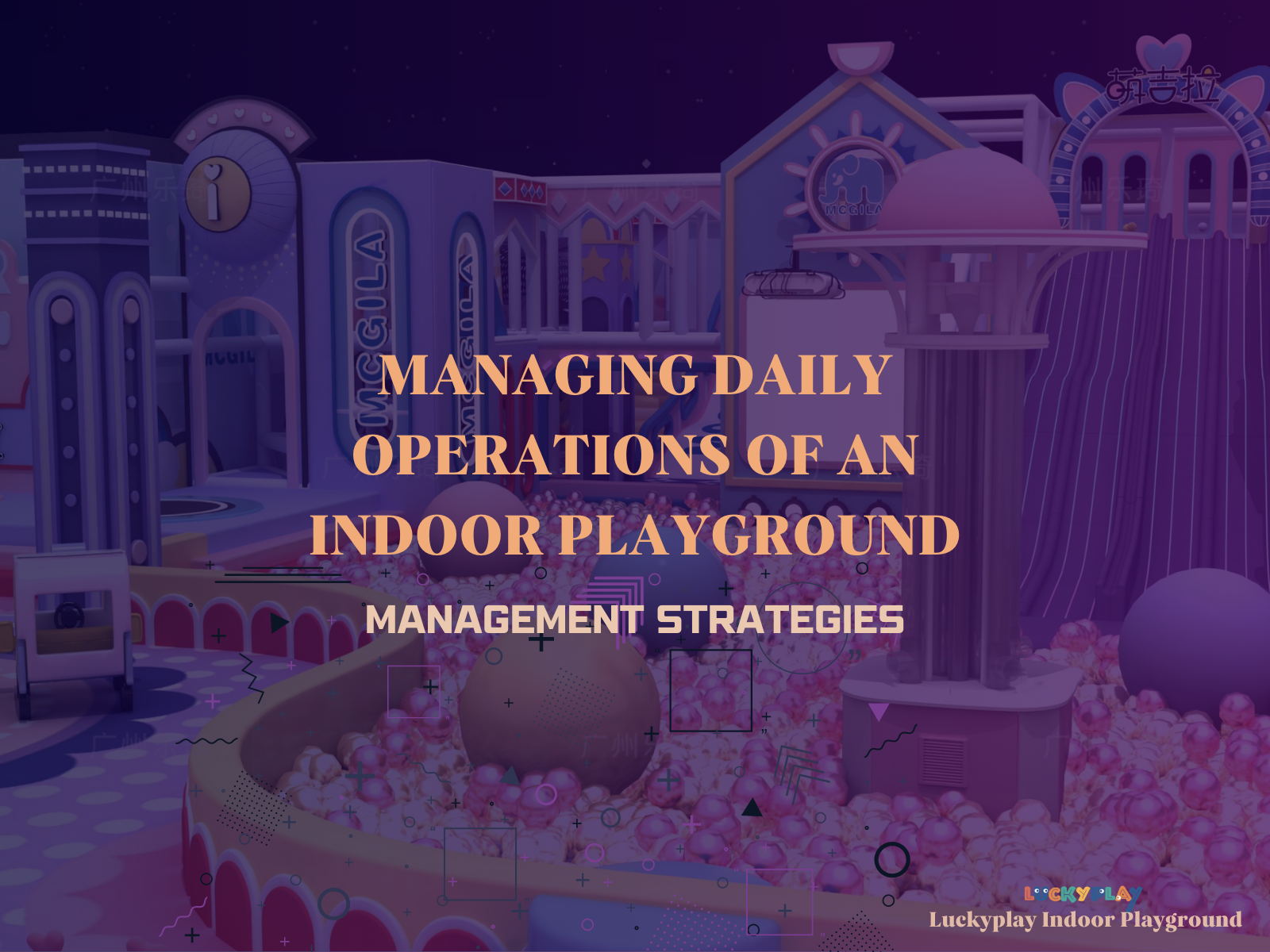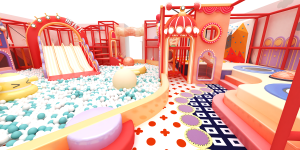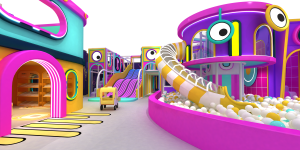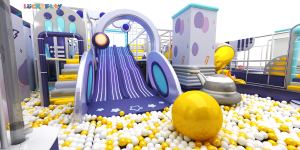Introduction
Indoor playgrounds have become a staple in the entertainment industry, offering a safe and vibrant space for children to play, learn, and explore. While these playgrounds are centered around fun and creativity, they also require effective management to ensure smooth daily operations. From maintaining safety standards to creating engaging activities, managing an indoor playground involves a delicate balance between providing an enjoyable experience for young patrons and running an efficient business.
Safety First: Implementing Comprehensive Safety Measures
One of the foremost priorities in managing an indoor playground is ensuring the safety of all visitors. Adequate safety measures must be in place to minimize the risk of accidents and injuries. Regular inspections of play equipment, surfaces, and facilities should be conducted to identify and address potential hazards. Staff members must be trained to enforce safety rules and protocols, while parents and guardians should be educated about the importance of supervising their children during play. By creating a secure environment, indoor playgrounds can build trust among their clientele and promote a positive reputation.
Engaging Activities: Curating Play Experiences
The heart of an indoor playground lies in the diversity and excitement of its play activities. Effective management involves curating an array of engaging experiences that cater to various age groups and interests. From slides and ball pits to creative workshops and sensory areas, the play zones should be thoughtfully designed to stimulate both physical and cognitive development. Rotating or updating the play installations periodically can maintain a sense of novelty and keep patrons coming back for more. Furthermore, offering themed events and parties can add an extra layer of excitement and help boost business during special occasions.
Efficient Staff Management: Training and Coordination
Behind the scenes, the success of an indoor playground heavily relies on a well-trained and coordinated staff. Hiring individuals who are not only passionate about working with children but also knowledgeable about safety protocols is crucial. Regular training sessions should cover emergency response, conflict resolution, and effective communication to equip the staff with the tools they need to handle various situations. Clear lines of communication and well-defined roles can minimize confusion and ensure that all aspects of daily operations run seamlessly.

Streamlined Reservation and Check-In Systems
In the digital age, streamlining reservation and check-in processes can significantly enhance the visitor experience. Implementing an online reservation system allows parents to plan their visits conveniently and helps the management keep track of peak hours and visitor numbers. An efficient check-in process, perhaps through self-service kiosks, reduces wait times and allows families to start their playtime promptly. Utilizing digital waivers and consent forms not only saves time but also contributes to a more Eco-friendly approach to operations.
Maintaining Hygiene and Cleanliness
Hygiene and cleanliness are of utmost importance in any indoor environment, particularly when children are involved. Regular cleaning routines must be established to sanitize play equipment, surfaces, and facilities. The use of non-toxic cleaning agents is essential to ensure the safety of young visitors. Additionally, providing easily accessible hand sanitizing stations throughout the premises encourages good hygiene practices among both children and adults.
Accounting System: Financial Stability and Growth
A well-structured accounting system is fundamental to the successful management of an indoor playground. Financial stability and growth are essential for sustaining operations, expanding play offerings, and making necessary improvements. Implementing a robust accounting software can help track revenue, expenses, and profitability. Regular financial analyses provide insights into which areas are performing well and which may require adjustments. Efficient financial management allows for informed decision-making, ensuring that the indoor playground remains financially viable while continuing to provide quality experiences for its patrons.
Scheduled Monitoring for Repair or Upgradation
To maintain a safe and enjoyable environment, proactive maintenance and occasional upgrades are vital. Establishing a schedule for routine equipment inspections, repairs, and upgrades ensures that the play structures remain in optimal condition. Regular checks help identify wear and tear, preventing potential hazards before they become serious issues. In addition, planning for periodic upgrades not only keeps the play offerings fresh and exciting but also showcases the playground’s commitment to ongoing improvement. By adhering to a systematic maintenance and upgrade schedule, the indoor playground can extend the lifespan of its equipment and enhance the overall customer experience.
Effective Marketing and Community Engagement
An essential aspect of managing an indoor playground involves effective marketing and community engagement strategies. Building a strong online presence through a user-friendly website and active social media platforms can attract a wider audience and keep them engaged. Promotions, special events, and discounts can entice new customers while retaining the loyalty of regular patrons. Collaborating with local schools, community centers, and businesses can also foster a sense of belonging and strengthen ties within the community. By continuously interacting with the target audience and adapting marketing efforts, the indoor playground can maintain its popularity and ensure steady foot traffic.

Staff Motivation and Training
The success of an indoor playground is heavily influenced by its staff. Ensuring that the team is motivated, well-trained, and aligned with the playground’s vision is paramount. Regular staff meetings can serve as a platform for sharing feedback, discussing challenges, and brainstorming new ideas. Recognizing and rewarding exceptional performance can boost morale and encourage continued dedication. Investing in ongoing training not only keeps staff updated on safety protocols and customer service best practices but also allows them to develop professionally, enriching their contributions to the playground’s overall success.
Environmental Sustainability
Incorporating environmentally friendly practices into daily operations is increasingly important for businesses today. Implementing energy-efficient lighting, minimizing waste, and using eco-friendly materials in construction and maintenance can contribute to reducing the indoor playground’s ecological footprint. Educating visitors about these efforts can also foster an environmentally conscious mindset among both children and their caregivers. Embracing sustainability aligns the indoor playground with modern values, attracting environmentally conscious customers and contributing to a healthier planet.
Feedback Collection and Continuous Improvement
An effective management strategy involves collecting feedback from visitors and stakeholders to drive continuous improvement. Encouraging parents and children to share their experiences and suggestions can provide valuable insights into areas that may require adjustments or enhancements. Regularly analyzing this feedback allows the management to identify trends and respond promptly, showing a commitment to delivering exceptional experiences. A suggestion box, online surveys, and direct interactions with customers can all be used to gather input and demonstrate that the indoor playground values the opinions of its visitors.
Conclusion
Managing an indoor playground is a multifaceted endeavor that requires a holistic approach. From financial stability and customer engagement to regular maintenance and sustainability, successful management hinges on a combination of strategic planning, efficient operations, and a commitment to delivering a safe and enjoyable experience. By embracing these additional points of focus, indoor playgrounds can thrive as dynamic and vibrant spaces that cater to the needs of their young patrons while remaining resilient and adaptable in a competitive market.









